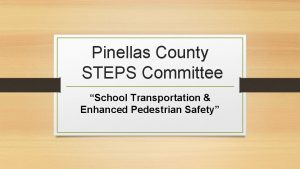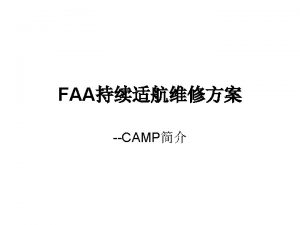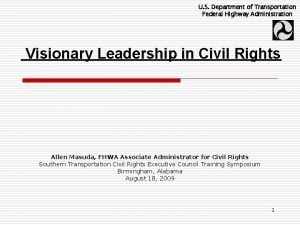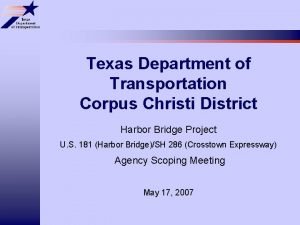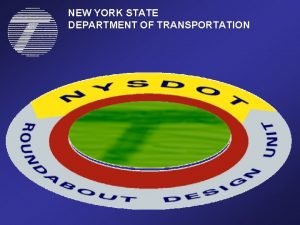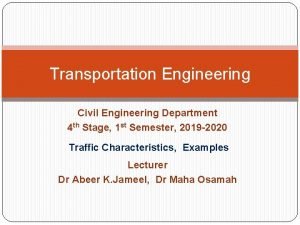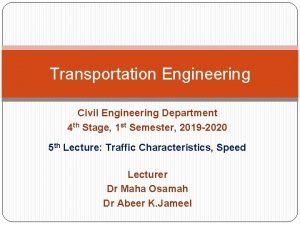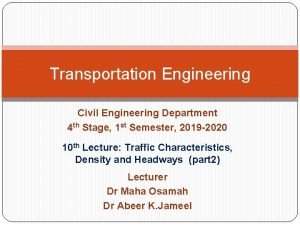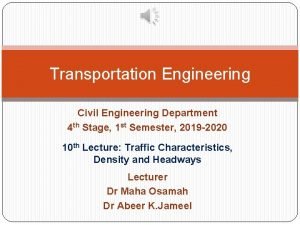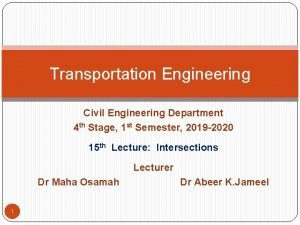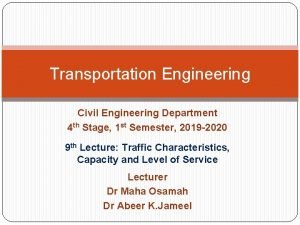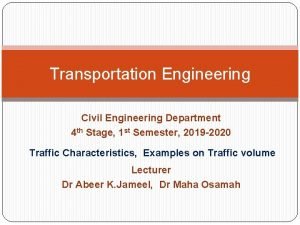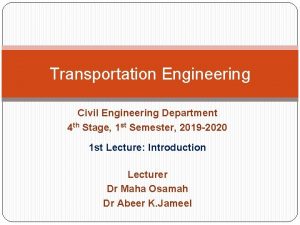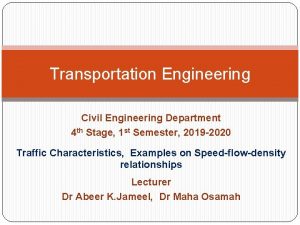Transportation Engineering Civil Engineering Department 4 th Stage




![Sight Distance d 1 = 0. 278 t 1 [V + (a. t 1)/2] Sight Distance d 1 = 0. 278 t 1 [V + (a. t 1)/2]](https://slidetodoc.com/presentation_image_h/1c2e5a6b7a740e339964eb880cdd5670/image-5.jpg)





- Slides: 10

Transportation Engineering Civil Engineering Department 4 th Stage, 1 st Semester, 2019 -2020 13 th Lecture: Sight Distance (4) Lecturer Dr Maha Osamah Dr Abeer K. Jameel

Sight Distance 2. Decision Sight Distance It is the distance needed to avoid maneuver (stopping, speeding, or path change). It is considered in the design of roads at complex locations (visual noise area) like intersection, interchange or where there is a change in the cross section. DSD (m) when speed=100 kph Stopping in rural area 225 Stopping in urban area 415 Speed or path change in rural 315 area Speed or path change in 365 maneuv Description er A B C D DSD (sec) 3 9. 1 10 12

Sight Distance 3. Passing Sight Distance (PSD): It is the minimum distance required on two-way two-lane highways to give the opportunity to pass slow moving vehicles safely. It must be provided at intervals, otherwise capacity decreases and accidents may occur. A C C A B B

Sight Distance The PSD is determined as the sum of the following four distances: PSD (Min S passing) = d 1 + d 2 + d 3 + d 4 d 1: distance traveled during perception and acceleration time (initial maneuver distance).
![Sight Distance d 1 0 278 t 1 V a t 12 Sight Distance d 1 = 0. 278 t 1 [V + (a. t 1)/2]](https://slidetodoc.com/presentation_image_h/1c2e5a6b7a740e339964eb880cdd5670/image-5.jpg)
Sight Distance d 1 = 0. 278 t 1 [V + (a. t 1)/2] Where: V: average speed of overtaking vehicle (Km/hr) t 1: preliminary delay time (3. 5 -4. 5) sec ≈ 4 sec a: acceleration rate : 5 -1 Km/hr/sec for trucks 3 -8 Km/hr/sec for ordinary car 16 -24 Km/hr/sec for sport car

Sight Distance d 2: distance traveled in the opposite direction d 2 = 0. 278 V 2 t 2 Where: d 2 = overtaking distance (m) , V 2= average speed of overtaking vehicle (Km/hr) t 2: =time of occupying opposing lane =(9. 5 -11. 5) sec ≈ 10 sec

Sight Distance d 3: safety distance(clearance distance) = 100 m It is the distance between the passing vehicle at the end of its maneuver and the opposing vehicle.

Sight Distance d 4: It is the distance traversed by an opposing vehicle in the opposing lane (m). It is equal to the two-thirds of the time the passing vehicle occupies the left lane d 4 = 2/3 d 2

Sight Distance Example: A driver is traveling on a two-way two-lane highway (with speed of 90 km/hr) is trying to overtake a vehicle ahead (with speed of 65 km/hr). The acceleration rate of the passing vehicle is 3. 1 km/hr/sec, and the vehicle spent 2. 3 sec for the initial maneuver to the opposing lane and 8. 1 sec traveling on it. If you know that the distance between the overtaking and the opposing vehicles before the beginning of the overtaking process is 450 meters. Is this distance adequate to complete the overtaking process? Assume that the required clearance length between the opposing and passing vehicle is 75 m. Solution: P. S. D. = d 1 +d 2 +d 3 +d 4 d 1=0. 278*2. 3[90+(3. 1*2. 3/2)]= 59. 8 m d 2=0. 278*90*8. 1=202. 66 m d 3=75 m d 4 = (2/3)*d 2 = (2/3)*202. 66 = 135. 1 m

Sight Distance Example: A driver is traveling on a two-lane highway (with speed of 90 km/hr) is trying to overtake a vehicle ahead (with speed of 75 km/hr). The acceleration rate of the passing vehicle is 3. 1 km/hr/sec, and the vehicle spent 2. 5 sec for the initial maneuver to the opposing lane and 8. 0 sec traveling on it. Find the required passing sight distance.
 Civil rights webquest
Civil rights webquest Massachusetts department of transportation
Massachusetts department of transportation Montana department of transportation
Montana department of transportation Pcsb transportation
Pcsb transportation Department of transportation
Department of transportation Department of transportation
Department of transportation Maricopa county department of transportation
Maricopa county department of transportation Texas department of transportation corpus christi
Texas department of transportation corpus christi Nysdot hdm
Nysdot hdm Department of transportation
Department of transportation 417 toll rates
417 toll rates



